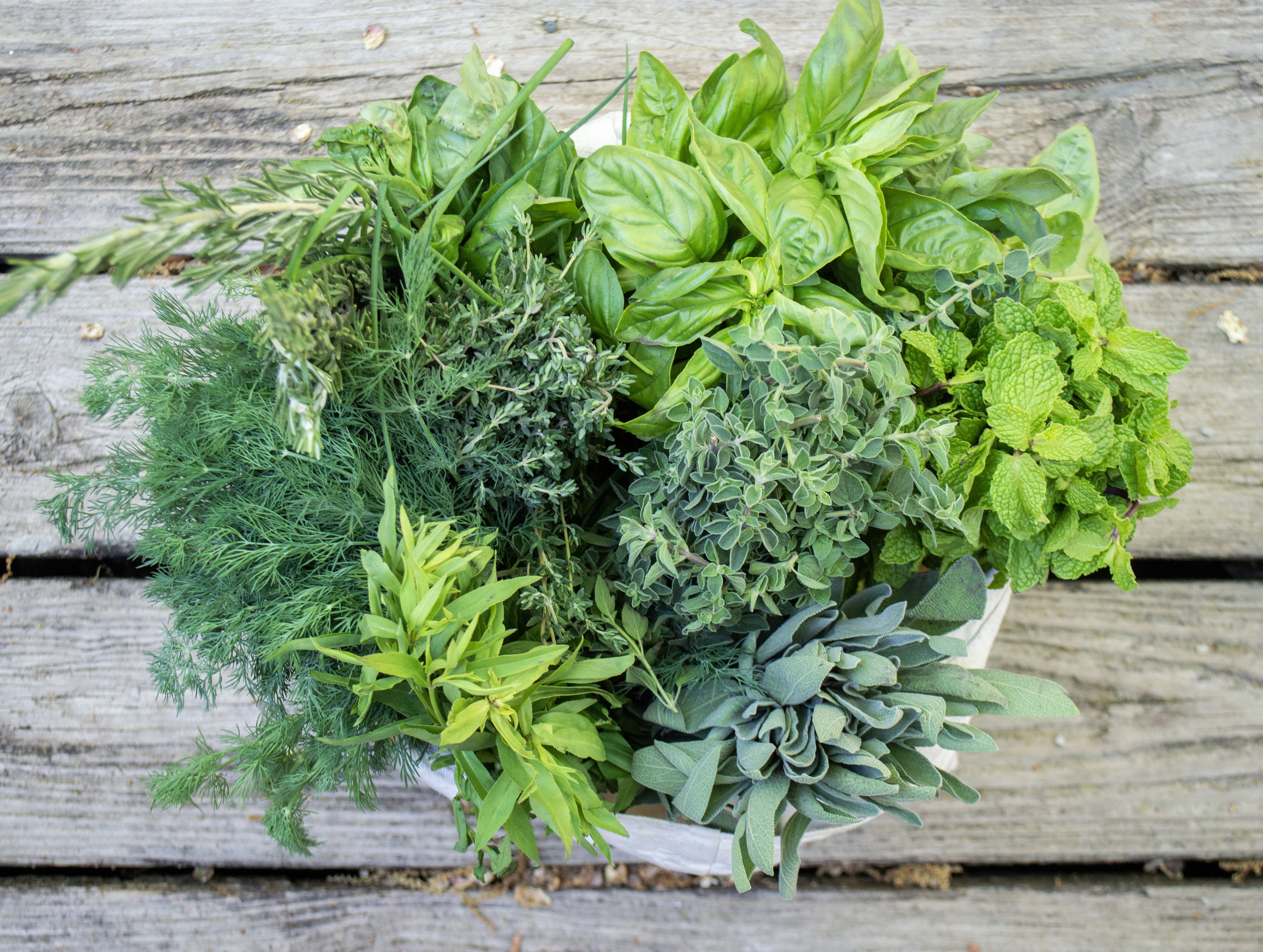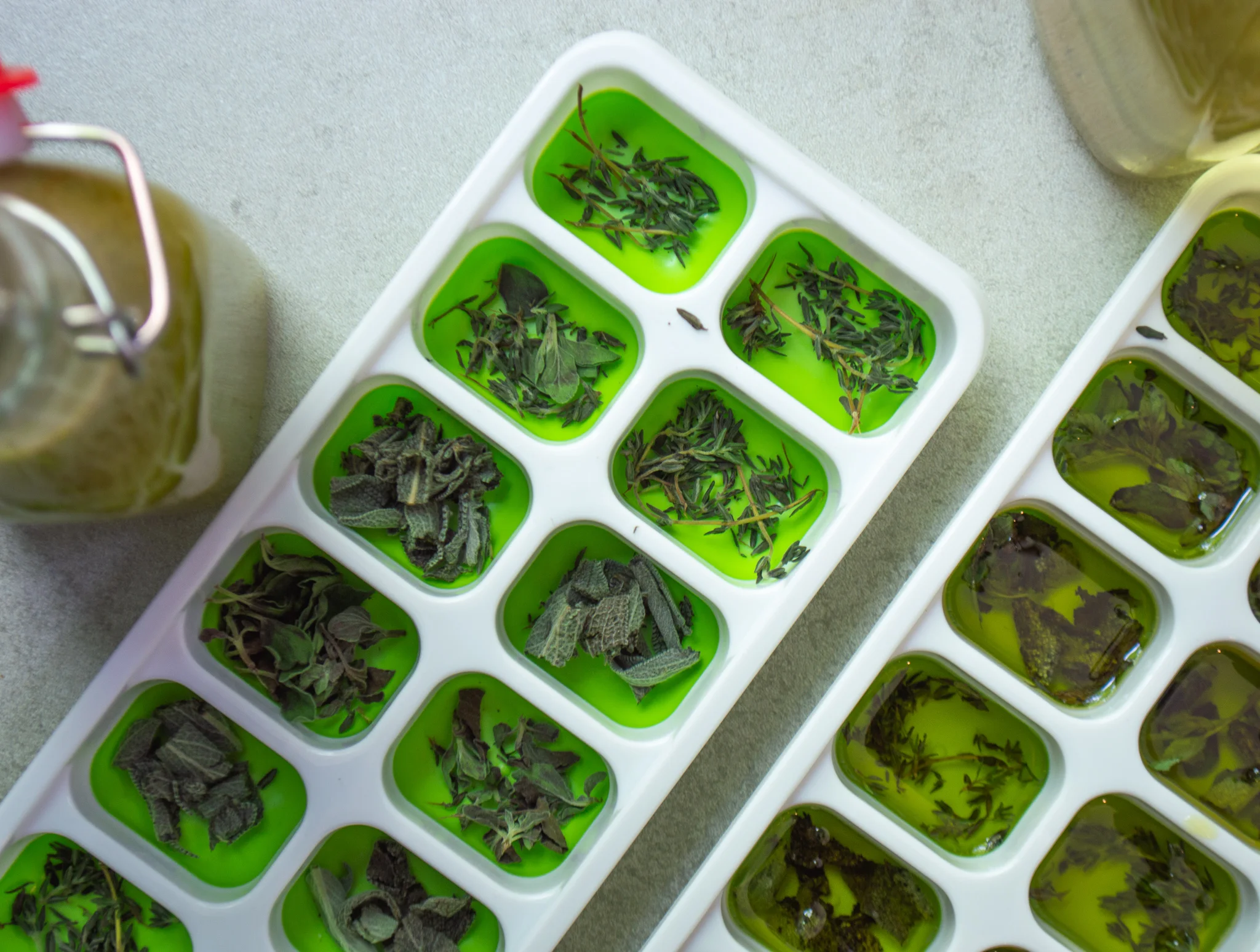Hello!
We're Mei & Irene.
We're here to make your life more delicious and creative and help you stop throwing out food. Thanks for joining us on our mission to reduce food waste!

We're here to make your life more delicious and creative and help you stop throwing out food. Thanks for joining us on our mission to reduce food waste!

Herbs are one of the most common items we throw out. You cook an awesome recipe that calls for a tablespoon of parsley - now what do you do with the bunch-minus-a-tablespoon of parsley?
The leafier, lighter herbs can often be used interchangeably, including mint, parsley, cilantro, basil, tarragon, oregano, dill, fennel fronds, chervil, and chives. Scatter torn leaves onto a salad or pizza, make into salsa verde or pesto, extend their life as an oil or in a syrup or browse below for more options!
The stronger, woodier or tougher herbs such as sage, rosemary, thyme, lemongrass, and ginger (not commonly thought of as an herb, but included by the Herb Society of America!) are used a bit differently - they can still make oils and syrups, but you won't typically eat them raw. Toss a sprig on the pan as you sear or roast meat or vegetables, add to soups and stews, and more ideas below...

I like to keep herbs like fresh flowers, in a container with some water at the bottom. Basil browns pretty quickly in the fridge so keep it on the counter, but the rest of the herbs will last a pretty long time in the refrigerator. The picture below is of herbs almost 2 weeks old - they don't look as vibrantly green or leafy as the photo above, but they're absolutely still usable. You can also store them like salad greens, in a loosely wrapped bag in the refrigerator.

Fresh herbs are best as garnish or in raw salads, but wilted herbs can be used in nearly every other recipe. As long as they're not slimy, brown or rotting, they can be used in condiments from herb oil to sauce to dip to butter, or dishes from bread pudding to frittatas.
Got wilting herbs and need to make a quick rescue? The following are my go-to methods to not waste expensive fresh herbs.

